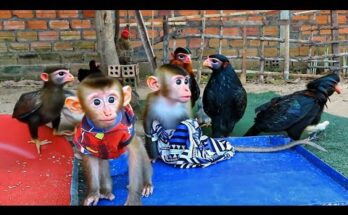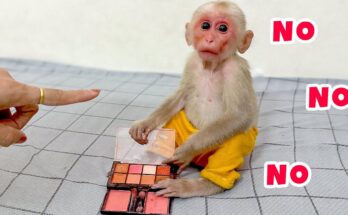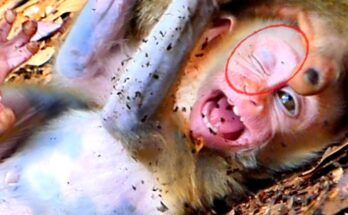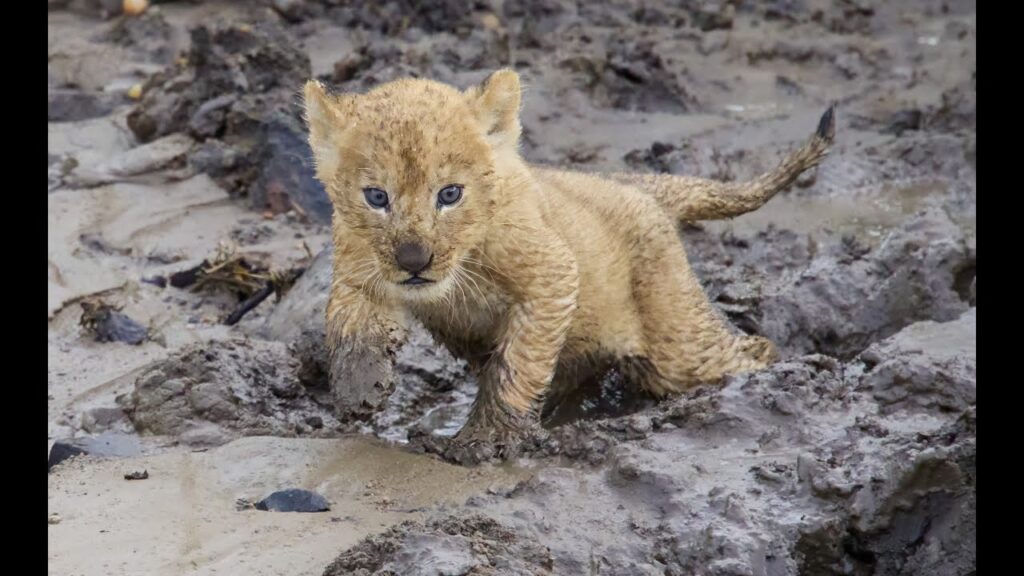
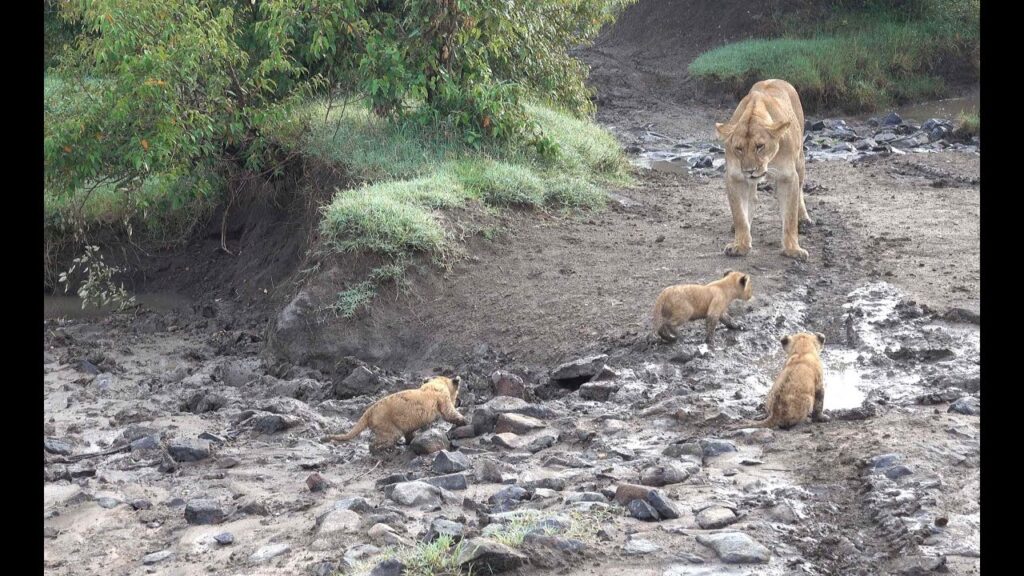
In the sun-drenched plains of Kenya’s Maasai Mara, life unfolds in moments that are both grand and gentle. The sweeping savannah, famous for its powerful predators and breathtaking landscapes, is also home to scenes of quiet vulnerability. One such moment took place atop a grassy hill where a tiny lion cub stood frozen, too afraid to descend.
The cub, likely only a few weeks old, was still adjusting to its new and unpredictable world. With oversized paws, a fuzzy coat, and wide, curious eyes, it had barely begun exploring beyond the den. That morning, the pride had moved to a new resting spot at the base of the hill, leaving the little one momentarily behind. The mother lioness had descended smoothly with the rest of the pride, confident that her cub would follow in time. But for the cub, the short but steep slope ahead felt like a cliff.
From a human perspective, the hill wasn’t much—perhaps a five-foot incline of dusty earth and scattered tufts of grass. But to a young cub with unsteady legs and a limited sense of depth, it looked far more intimidating. The cub crept to the edge, crouched low, and peered down nervously. A soft whimper escaped its throat, and it took a hesitant step forward—only to back away quickly. Its small tail flicked anxiously, and its ears flattened in uncertainty.
Below, the lioness noticed her cub’s struggle. She paused, turned her head, and let out a low, encouraging chuff—a vocal reassurance meant to coax the cub forward. Other members of the pride lounged in the shade, uninterested in the drama above. For them, this was part of daily life. But for the cub, it was a pivotal moment.
This scene highlights a tender and rarely seen side of lion life: the growing pains of young cubs. While lions are often portrayed as fierce and regal, their early stages are full of trial and error. Cubs learn through play, imitation, and small acts of bravery. Climbing, tumbling, and exploring are how they build the strength and confidence they’ll need to survive adulthood.
The cub tried again. It placed one paw forward, then another, slowly shifting its weight. But as a clump of dirt crumbled beneath its foot, it lost balance and tumbled back onto its haunches. With a soft growl of frustration, it turned in a small circle, clearly torn between fear and the instinct to rejoin its mother.
After a few more tries, the lioness climbed halfway back up the slope and sat patiently, waiting. Her presence seemed to calm the cub. With its eyes locked on hers, the tiny lion gave it another go. This time, it shuffled forward with more determination. Instead of trying to walk straight down, it lowered its belly and slid cautiously along the slope. Bits of dust kicked up behind it as it made its way down, awkward but effective.
Finally, with a tiny leap at the base, the cub reached the bottom. The lioness gave a low grunt of approval and nuzzled the cub gently. Tail raised and chest puffed, the cub strutted the last few feet as though it had just conquered a mountain. In a way, it had.
This small but powerful moment reminds us that even the mightiest animals start with fear and uncertainty. That lion cub, one day destined to be a predator at the top of the food chain, had to take the same small, shaky steps we all do when facing the unknown.
These glimpses into the lives of wild animals offer more than entertainment—they reflect universal truths about courage, growth, and support. The cub’s reluctance, the mother’s patience, and the eventual triumph are not just wildlife behavior—they’re symbols of family, trust, and learning.
In the grand theater of the African wilderness, not every story is about life-or-death struggles. Some are about the quiet challenges of growing up, even if it’s just learning to come down a hill.
